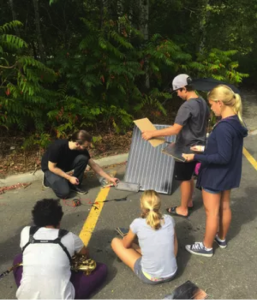Lessons from the Walter Baker Pool
and
What Are Schools For?
by Adele Blair
As a retired, senior lady awaiting an Aquafit class recently, I watched with nostalgic memories of my own babies, a group of twenty something, swimsuit clad moms, carry their cherished infants on their hips, confidently into the warmth of a shallow pool, at the Walter Baker Sports Centre, in Nepean, Ontario. With a one on one ratio, a small class of moms and babies, and a sweet, young swim instructor, the class commenced. The babies felt secure in the arms of the most significant human in their world. The moms felt safe, along with their children, with the small class, the spacious shallow warm pool, and an outgoing, well trained instructor, whose smile could light up the entire place , even if the power failed!
And the focus was on teaching the babies that being in the water was fun, enjoyable, safe and that mom loved every minute of it too! They were towed around as if pulled by a tugboat, swooshed back and forth while laughing like crazy, and engaged in a splashing game which drenched everyone in the end, as if they had run through a car wash, or danced in the rain!
Every one of these babies had an amazing physical, emotional, and intellectual experience as they began the Learn To Swim program, which could extend through the duration of their childhood, through the sequentially prescribed steps, which teach the skills needed to become a competent swimmer, well into the teen years, when a National Lifeguard Certification can be obtained.
I saw my own children climb those steps for a while, and then leap over the standard progression, into the Nepean Swim Club, where they became world class, national or provincial finalists and champions.
I was given to comparing the success of this programming, now so established and proven to teach children to become competent and safe swimmers, and for those with interest, talent and supportive families to become world level athletes, to the elementary school system in which I served, as a teacher, for a 31 year career, and in which my children were educated.
It helped me answer the question “What are Schools For?”, with clarity and ease, at least for children under 9 or 10 years of age, in this expression of ideas.
Consider this. At the pool, the stage is set for babies to love and enjoy the water experience. They have the security of warm and supportive humans nearby, who will protect and keep them from any harm. PLAY, in this environment builds a love for the activity, and learning how to swim, right from the get go!
The environment is perfect, with loads of space, a child centred determined amount of time at the activity, the ideal adult/ child ratio and the aim to establish emotional, physical and intellectual readiness for swimming instruction. And it is accomplished with all these ducks in a row, with PLAY.
Educators have been taught for years the philosophies of great thinkers like Piaget, Jamison and Montessori, that “ Play is the work of childhood.” In my experience, approaching teaching almost anything to children is best done through play, both free play, and structured play, designed for a purpose. Sometimes the play can be alone, sometimes with an adult, sometimes with one other child, and sometimes in groups.
In the swimming instruction program, I note that each level has a clearly defined, absolutely comprehended by everyone, list of tasks that the child MUST complete, by himself, without any help from anyone, in order to pass, and be assigned to the next level above. No child moves ahead to harder tasks, without 100% mastery of the skills in the class before. If, for example, the child must swim alone 25 metres, with no help from any device, instructor or parent, he/she MUST be able to do it, or he/she MUST take the class again.
In the swim classes, no one moves on who has not mastered the required skill. No one gets passed because he/she attends all the sessions. No one gets passed because his/her parent complains about the teacher. No one gets passed because the parent complains so much, the instructor caves and checks the pass box on the evaluation. No one is passed because his/her group all tried very hard. No one gets passed because he/she is of a particular race or culture, or comes from a disadvantaged background. No one gets passed because he/she might feel badly about needing more time than others to learn the skill.
Indeed when a child gets passed from one level to the next in the swim program, EVERYONE knows that the child can do exactly what he/she needed to do to meet the standard, and that he/she did it on his/her own. EVERYONE can be completely assured he/she is ready and capable to tackle the challenges of the next level. EVERYONE can rely on the truth here, that the child’s skills are strong at every stage and the foundation provided will allow him/her to progress confidently, from one level to the next, and then on to the ones which follow those.
At some point, some children seem to just get it, fast and well, and surge ahead of their group. Their skills develop at a breakneck pace and they fly through the water with ease. They love the activity and are really exceptionally good at it. Many of these kids drop out of the step by step programs, join a swim club and rise rapidly through the ranks of competitive swimmers, who develop this sport to the limits of their time, interest, ability and parental ability to support it. For some, it sets them on a path for a career choice or lifetime recreational activity.
For others, the slow, steady progression through the levels is best for them to eventually, over time, become decent, average swimmers, who enjoy time in the water, safely and comfortably, taking them through life with a skill valuable to all. Attaining competence in basic swimming has taught them how to keep safe around water, how to save their own life if needed, how to have fun, how to learn in a group, how to do what an instructor tells one to do to reach a goal, how to practice something over and over until the desired task is learned, and how to be confident that one can achieve a goal, even if at first, he/she finds it difficult. It has also imparted the message, that it is OK not to learn something at the same rate as someone else, and that accomplishing the goal totally by oneself, no matter how difficult or how many sessions it may take, is most rewarding and a major confidence builder! It teaches children, that anything worth doing and learning requires one’s own, personal, full effort and no one else can, or should, do it for you!
In addition, in the swim programs, no instructor is expected to deal with more than the set number of children, usually about 5. No instructor is expected to get all the kids ready, dressed properly, checked for physical health, assessed for mental health, include children with behaviour problems or other special needs without a helper, guarantee that everyone passes, ensure choices of activities are provided, cover all the content in the course no matter if sessions are cancelled because of weather, a fire drill or pool closure issue or do it, in half the time, because parents also want their child to learn diving or some other worthy, desired skill set!
I see the purpose of the elementary school as the foundation to lifelong learning. Schools should be funded and staffed to allow for the development of the very young child, in a safe, supportive environment to experience the enjoyment and thrill of learning. A PLAY based approach would be best and supported by the Council of Ministers of Education, Canada in August, 2016.
Keeping the focus on the keys to opening up the world of knowledge to every child, has got to be READING, WRITING, and ARITHMETIC. Round that emphasis out, with exposure to the world of MUSIC, self expression opportunities through ART, and the development of a strong, healthy body through a great PHYSICAL EDUCATION program and that would meet the needs and time constraints, of most children for the elementary years, in school, in my opinion.
With a focus on the development of high level skills in Reading, Writing and Mathematics, a child would be enabled to go on to learn anything he/ she wants by him/herself. This approach would then allow all children, no matter their ability, interests or future choices the core base, the salient foundation, the house built of bricks rather than straw, which is an absolute necessity to go on in any field of study. Without being a highly skilled reader, a competent writer and a person with a solid mastery of basic mathematics, most further learning and career choices are badly compromised.
Educational programming seems to have lost sight of this, during my lifetime.This is not because we have not tried to improve schools or because our leaders in politics , Ministry of Education staff, researchers, school boards, administrators or teachers are/were not high quality people, trying their best to improve our schools. The problem is, we are trying to do too much.
Wonderful ideas have circulated through the years, in waves of changes to the way school has been served up to our children. Every single one probably could be supported in theory, as a way to make education better. Every single one has been seen as something we should be doing , something we need to add, or something every child must know, because our society and knowledge base has expanded so quickly, with experience, echnology and scientific discoveries. Who could say learning a second language, studying computers, or having sex education in schools is not important? The problem, once again, is, we are trying to do too much.
When you add something in, you must take something out. That is the true reality of programming for classes of children in a typical school day of about 5 and 1/2 hours. When you add in a computer class you must steal the instruction time from another subject. When you add in a a second language block or blocks, you must steal the instruction time from another subject. When you add in a religion class, a sex education class or a preparation for EQAO test class, you must steal the instruction time from another subject. I repeat, when you add something in, you must take something out. Basic principal. Something in, something else out!
The result, in the school system, has been a severe and drastic reduction to the time allotted to the core basics of learning. In 1965, when I was trained as an elementary teacher, the primary class day had two full blocks, one half of the instructional time in the school day, of focussed instruction time on language, at least! It included free reading, phonics, spelling, reading in groups according to level with the teacher, seat work such as comprehension questions or the like, done individually, related to the reading lesson, written composition, printing/ cursive writing, and listening to a story being read by the teacher. The second half of the day saw Mathematics taught, building skills step by step with tons of practice and those horrible words, rarely used today, called practice and drill, for a quarter day. The remaining quarter day, tried to achieve the objectives for learning in curriculum guidelines, for everything else- music, science, social studies, health, religion, current events, public speaking, drama, physical education, art and whatever else popped up that day, or term, or year!
That recipe for education, while rift with problems that everyone interested in improving the school were aware of, did produce a large cohort of children who were competent readers , able writers and had a core base in Mathematics by age 9 or 10.
Now, remember the basic principal. Something in, something else out!
With the changes we are trying to make in schools, in 2018, implemented the way they are, with the funding available to do it, the skill levels of children learning there currently, in the three basic areas of reading, writing and mathematics, have declined. I saw it as a teacher. I saw it as a social worker. I saw it as a parent and grandparent.
I do not need to list for you here the literature, articles or studies to prove it. I am sure both you and I, and lifers in education, in this province, can give innumerable examples from our own experience to prove it, which in the end is the true reality of the situation. Indeed, studies can be quoted or designed to prove whatever you want, as anyone with university training can attest. The proof is in the pudding, called real life performance!
My own daughter, now 42, went off to college after a grade thirteen graduation, from the English program, in a Public System in Ontario. Initially, she sent me her research papers to look at , and I could not believe the level of the writing and the corrections I needed to make, to assist her. She is a bright girl, who completed a Business degree and has a professional level job, today.
My close friend’s daughter, now about 38, completed the same grade thirteen level, in a Catholic System in Ontario, and wanted to be a high school English teacher. My friend told me, that she had the same experience, with her daughter, who went on to get her teacher credentials and enjoy a career in government. Her mother’s comment at the time was, “She will have to learn how to write herself, before she will be able to teach anyone else.”
Another good friend, whose son went through a French Immersion program, says of her 30 year old, who is bright, has a degree now and good career going, that he cannot write in English or French and that she would never choose that programming option again, for any of her children.
I recently babysat an 8 year old child in my network, who will enter grade four this year. I played a few games with her and asked her to read a few things, which I would have expected the over 1000 grade three/ four kids whom I had taught, to handle with ease. I was quite disturbed by her skill level, despite her being a bright little girl, with a wonderful involved family.
I am limited here in space and time to go on with examples. Suffice it to say I would have no problem in providing many more. The problem is not less able learners. The problem is not less able teachers. The problem is we are trying to do too much.
The steps to mastery of the basics of Reading, Writing and Mathematics, require step by step progression in the development of skills, over many years, which absolutely demand large amounts of time, practice, repetition, effort, guidance, and support, when a few bumps occur along the road to competence. Without these basics, cemented in stone, in the elementary years, the choices ahead become limited, and others completely beyond reach.
What, then, are schools for?
In my opinion, the Elementary schools should concentrate on the basics, so the child becomes equipped to learn anything he/she wants, as he/she matures. They should give the child a hook and some worms, teach him/her how to fish, so he/she need never go hungry again. They should ensure the achievement, by every child, of solid, high level competence in Reading, Writing and Mathematics, in a warm supportive environment.
And like the approach in the swimming programs, the teacher should be competent and supportive. The requirements to meet each standard should be clearly stated. The stepping stones should be presented in a logical sequence with the outcomes expected, measurably realistic. And finally, the child must be able to prove his ability to meet the standard, confidently by himself, before he is allowed, expected or asked to move on, to the next level.
Let us learn, digest and apply the Lessons from the Walter Baker Pool to our schools. With the ability to read well, write well, and understand basic mathematics, a child can be then be set free on any path , to learn whatever he/she chooses, whenever he/she chooses, in whatever way he/she chooses, as a lifelong self directed learner!
So says the wisdom of experience.
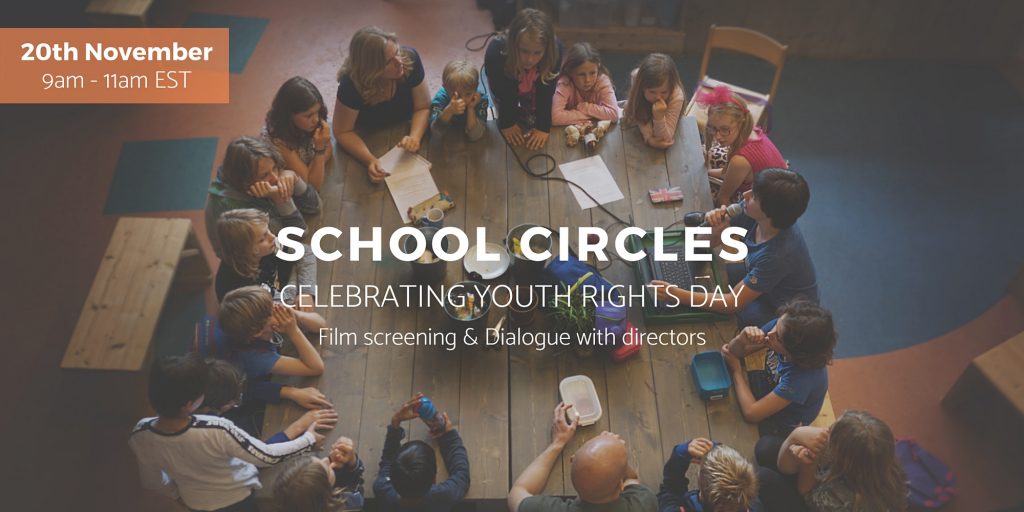

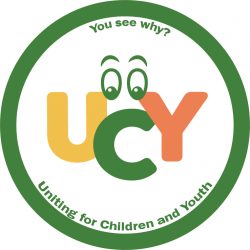
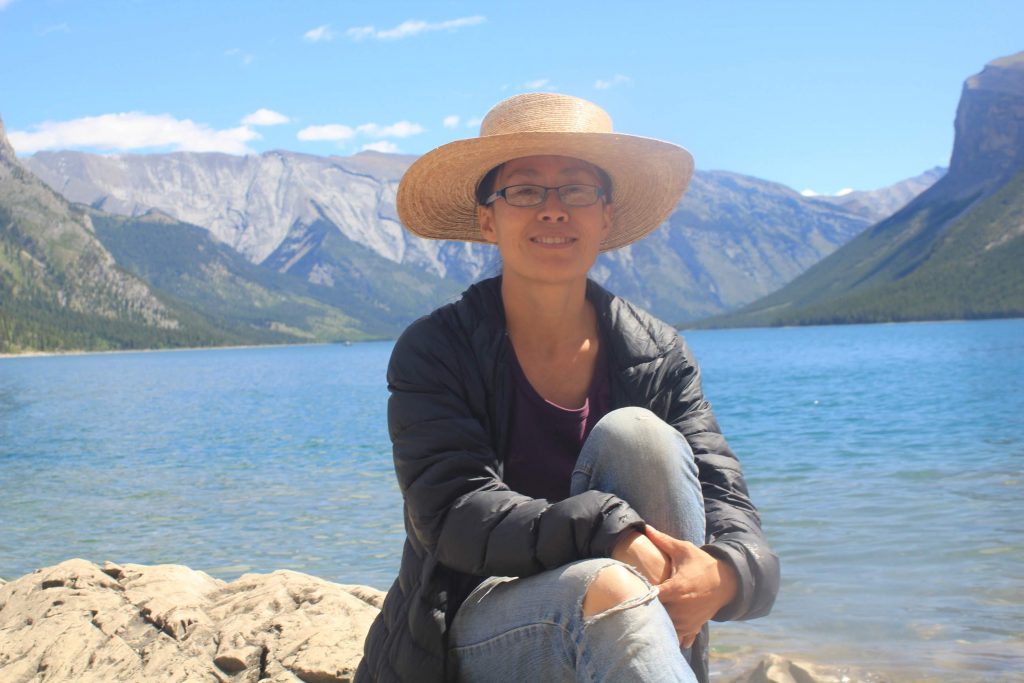

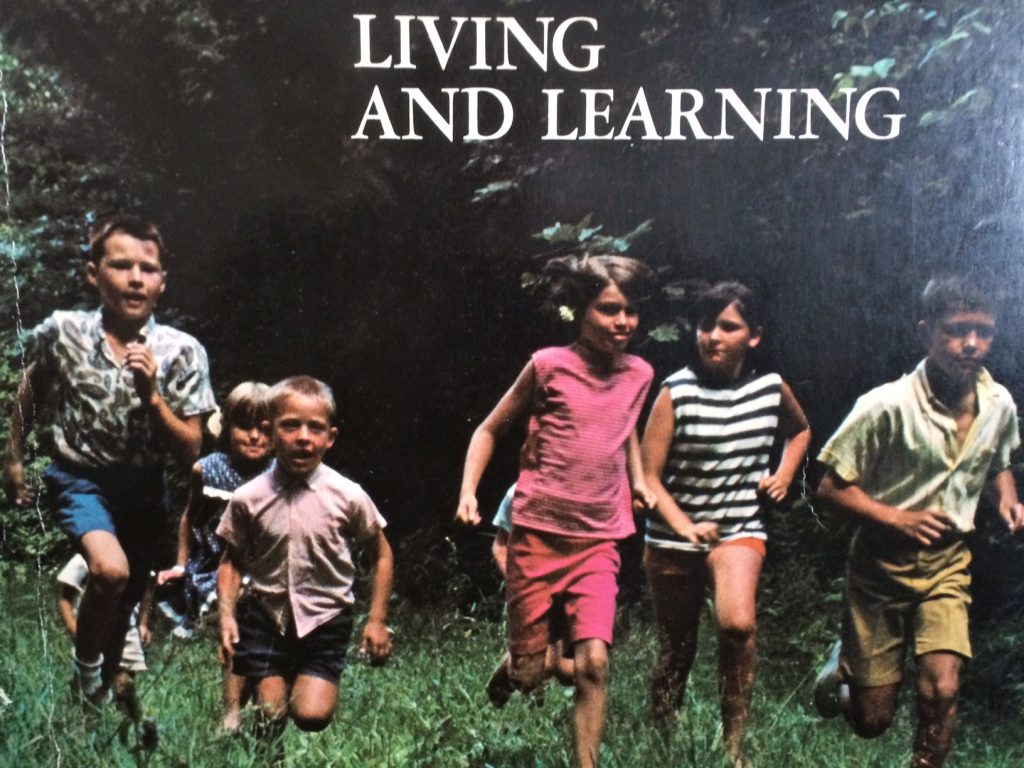



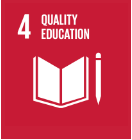

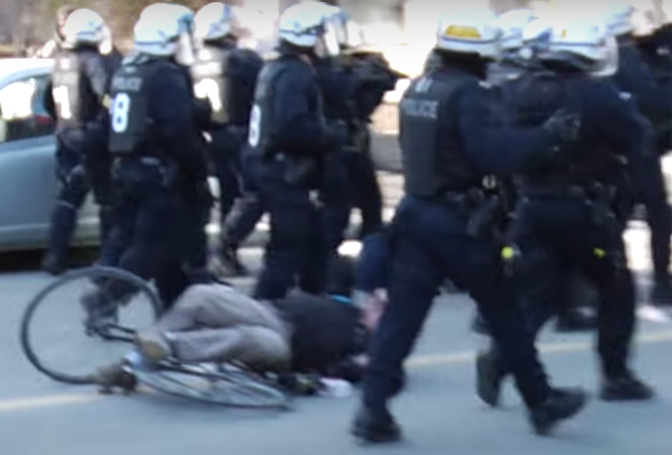

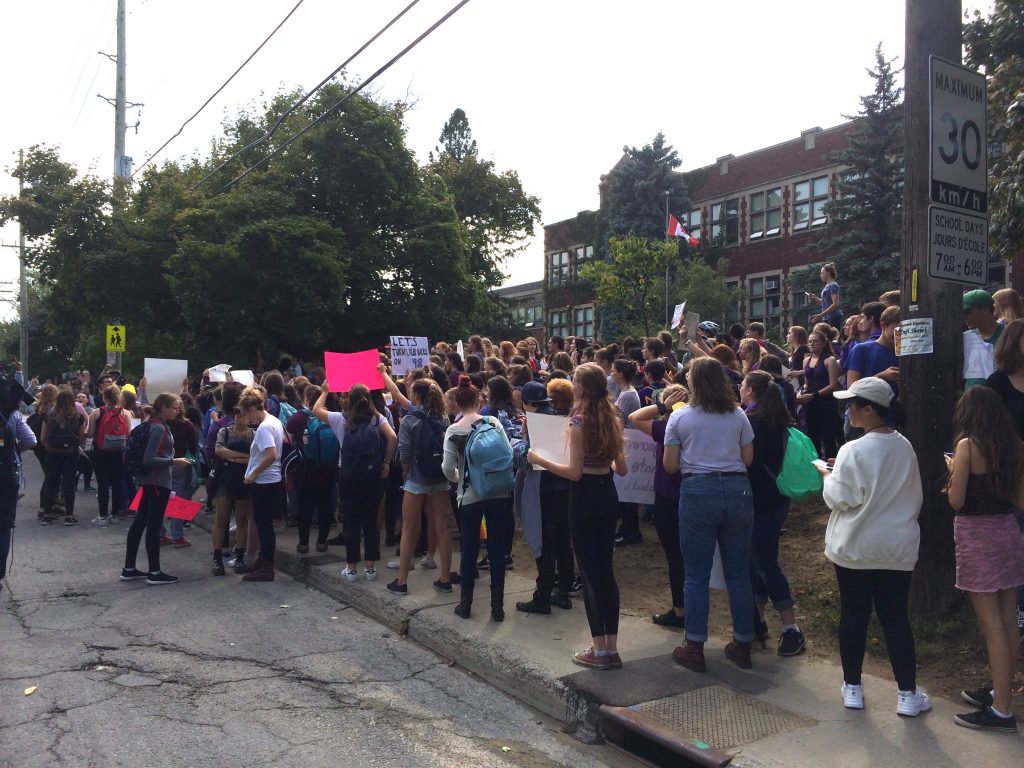
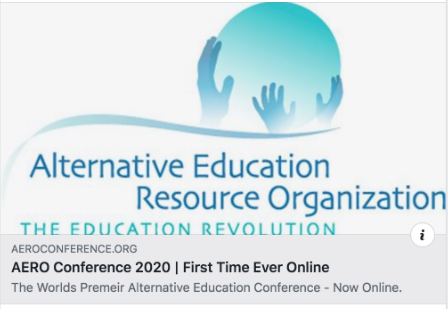
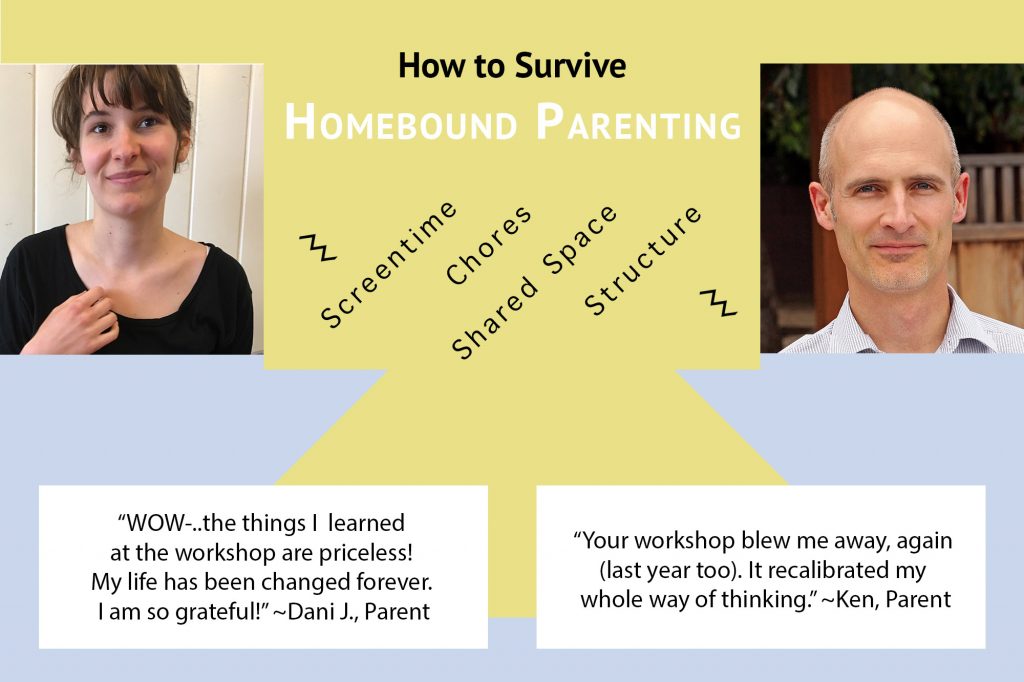
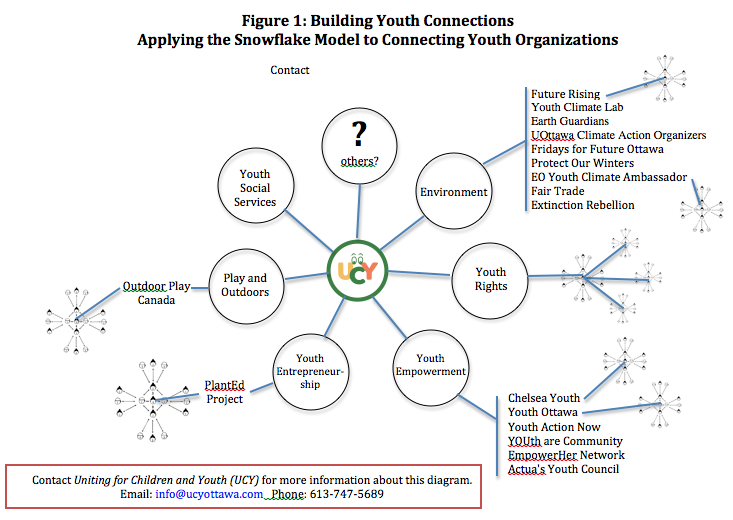
 Four years is how long students spend in high school, and the current
Four years is how long students spend in high school, and the current 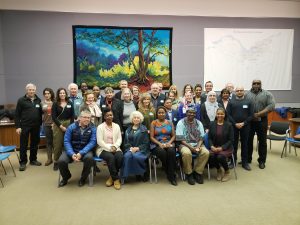
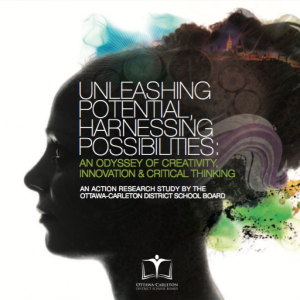

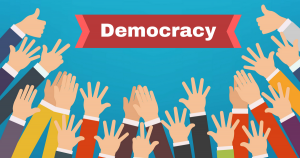
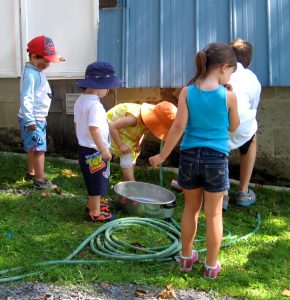 can be almost a whole year younger than their peers, yet they are all measured according to standardized curriculum outcomes. The age difference is huge and can leave the younger children disadvantaged and feeling inferior for no reason other than their birthdate. There are
can be almost a whole year younger than their peers, yet they are all measured according to standardized curriculum outcomes. The age difference is huge and can leave the younger children disadvantaged and feeling inferior for no reason other than their birthdate. There are 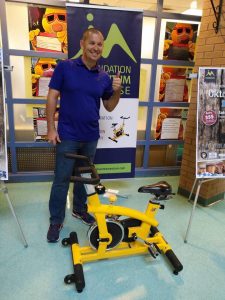 is an Ottawa/Outaouais organization promoting the mental health of young people. It recognizes the negative health affects of children being too sedentary and is helping to alleviate the problems by placing spin bikes in classrooms. It gives kids who feel they need to get up a move a way to get some exercise.
is an Ottawa/Outaouais organization promoting the mental health of young people. It recognizes the negative health affects of children being too sedentary and is helping to alleviate the problems by placing spin bikes in classrooms. It gives kids who feel they need to get up a move a way to get some exercise.
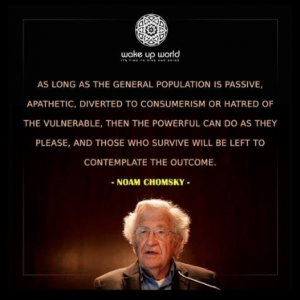


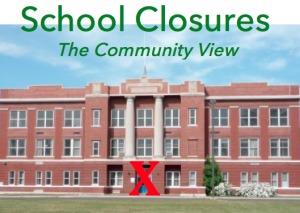

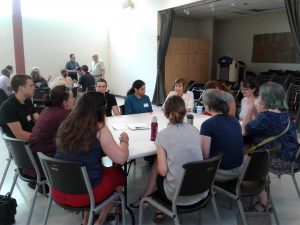 Over forty people attended the event , at least ten of whom are running to be trustees for either the Ottawa Carleton District School Board or the Ottawa Catholic School Board. Five current trustees, were among those present.
Over forty people attended the event , at least ten of whom are running to be trustees for either the Ottawa Carleton District School Board or the Ottawa Catholic School Board. Five current trustees, were among those present.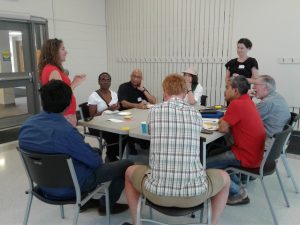 (1) I was so happy with the diversity of the participants – we had parents, educators, school board trustees and candidates, and concerned adults who don’t have children but who pay taxes to the public education system and want to have a voice. We had participants from the OCDSB, the OCSB, the homeschooling community and private/alternative schools. And I was impressed with the diversity in participants as the term is more commonly used – we had people from different races, cultures, religions, first languages, ages, and countries of birth. We need to hear from a diverse group of people, who have had diverse experiences with the school system, in order to ensure that we are making changes to the education system that will benefit all children.
(1) I was so happy with the diversity of the participants – we had parents, educators, school board trustees and candidates, and concerned adults who don’t have children but who pay taxes to the public education system and want to have a voice. We had participants from the OCDSB, the OCSB, the homeschooling community and private/alternative schools. And I was impressed with the diversity in participants as the term is more commonly used – we had people from different races, cultures, religions, first languages, ages, and countries of birth. We need to hear from a diverse group of people, who have had diverse experiences with the school system, in order to ensure that we are making changes to the education system that will benefit all children.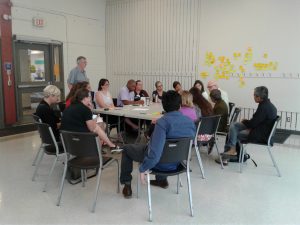 (2) People feel that the OCDSB has not really listened or been transparent in the past, especially in relation to the consultations for the changes made to the French Immersion program, full day Kindergarten and the closing of Rideau High School. Parents want more of a voice when it comes to the decisions made by the board. Communities want to be truly consulted. And information needs to go out in more languages than just English in order to reach all the parents. There was a strong sense of being responsible for all the kids in Ottawa and needing to make decisions that benefit everyone, especially the more vulnerable populations. This made me very happy!
(2) People feel that the OCDSB has not really listened or been transparent in the past, especially in relation to the consultations for the changes made to the French Immersion program, full day Kindergarten and the closing of Rideau High School. Parents want more of a voice when it comes to the decisions made by the board. Communities want to be truly consulted. And information needs to go out in more languages than just English in order to reach all the parents. There was a strong sense of being responsible for all the kids in Ottawa and needing to make decisions that benefit everyone, especially the more vulnerable populations. This made me very happy!
